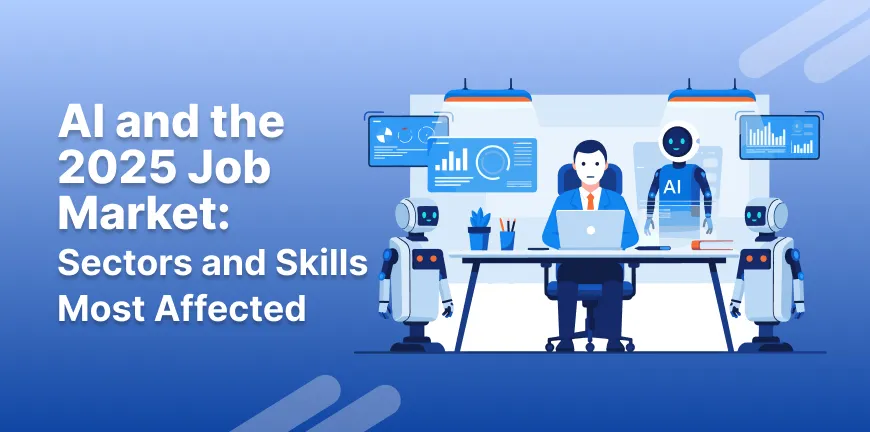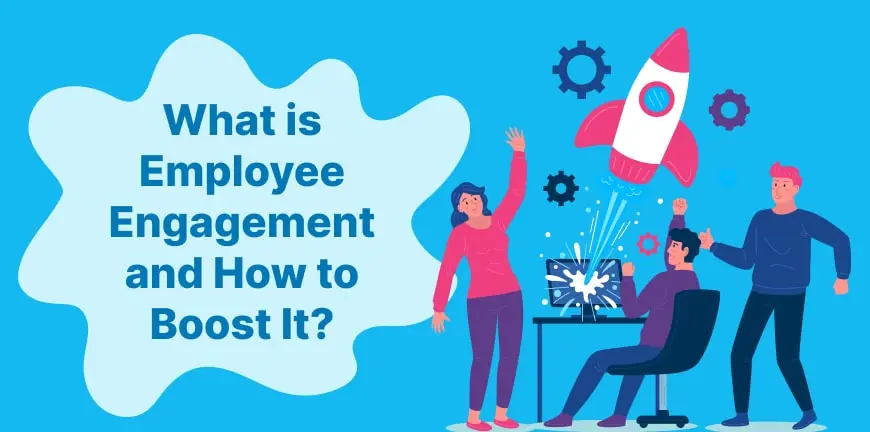
The Future of Talent Acquisition: How AI and Machine Learning Are Transforming Hiring Strategies
10/08/2025
How Companies Can Benefit from the National Apprenticeship Promotion Scheme?
20/08/2025- Predictive People Management: What does it imply?
- Predictive Management Matters Today: The Reason
- Core Elements of Workforce Forecasting Tools
- Popular Predictive Tools in the Market
- Benefits of Predictive Workforce Planning
- Challenges to Watch For
- Best Practices to Adopt
- Looking forward to an Intelligent Talent Force
Anticipating tomorrow’s needs today is what we mean when we talk about predictive people management. As John W. Tukey, Statistician & Pioneer of Data Analysis, has said, “The greatest value of a picture is when it forces us to notice what we never expected to see.”
The up-tempo world we live in, where intense global talent wars are a reality, technology evolves overnight, and expectations of employees change with the wind.
This is where predictive people management comes into play. In the new world, data becomes the roadmap for your future, and valuable information propels your workforce plans.
Are you ready for the whirlwind change? If yes, let us take you through the various facets of predictive people management.
Predictive People Management: What does it imply?
Predictive people management aims to forecast future manpower requirements, skills scarcities, productivity standards, etc.
The method entails the utilization of progressive analytics, machine learning tools, and prediction tools to attain in-depth information about the trends and behaviour of employees and teams.
The strategy is beneficial to HR and business leaders, enabling them to make practical and thoughtful decisions catering to the long-term organizational objectives.
Predictive Management Matters Today: The Reason
1. Speedily Evolving Labor Markets
Skill scarcity is a growing problem, and according to a survey, it is anticipated that global skills gaps may cost the economy around $8.5 trillion annually by 2030.
If you are a company looking to grow your business while safeguarding your operations, you must gear up.
You must utilize predictive analytics that will predict shortages in key roles, enabling you to create sturdy talent banks in advance.
2. Surging Remote and Hybrid Workforces
Workforce prediction supports employers by forecasting which job positions are more suitable for hybrid or remote approaches.
They can also provide them with reports of how the changes will impact team spirit, engagement levels, and performance.
Use Case- A multinational marketing agency experienced a dip in creativity and teamwork after switching to a hybrid structure.
Solution: Deployed people analytics tools to oversee collaboration frequency, meeting overload, and team engagement.
3. Evolving Skill Landscape
Workplaces are transforming constantly with the digital revolution penetrating through all sectors. The skill development space is also changing with new technologies taking over.
Workers must learn and adapt special skills guided by emotional intelligence, innovation, and cautious thinking.
The change is broadening the gap between what is to be learnt to adapt and what is redundant.
Predictive analysis and AI-powered tools enable organizations and HR teams to track market trends and internal performance data, specifying roles that are becoming redundant.
The tools can identify dipping efficiency levels and predict the job positions that might face challenges due to the emergence of advanced technology.
4. Employee Expectations on the Rise
Today’s employees are no longer fans of a high salary; along with it, they want more. They are keen on building their career pathways and focus on their mental well-being, values, and purpose.
Predictive tools in this scenario are helpful for organizations and recruiters as they can forecast career growth inclination.
The tools evaluate the skills of employees, their performance level, and behavior style to predict their career paths.
They identify individuals who are vulnerable due to a lack of engagement that is caused by discontent or a dearth of personal and professional development.
The advanced tools can also guide recruiters and recommend personalized learning and upskilling trajectories to cater to future roles.
Core Elements of Workforce Forecasting Tools
Demand for Talent
The forecast of the number of employees required for specific roles or departments is made by analysing business purposes, growth developments, and seasonal patterns.
Employee Departure Analytics
This involves the usage of past data and behavioural styles to identify workers who are keen on leaving an organization.
Succession Designing
This is the process of evaluating leadership roles and pipelines to anticipate future leadership discontinuity while backing career developments.
Skills Gap Review
This is the analysis of the abilities of the existing manpower against future requirements and recommends targeted training programs.
Workforce Planning
Predicts how available and productive the staff is, enabling managers and executives to prepare in advance and manage workloads while optimizing resource allocation.
Popular Predictive Tools in the Market
| Tool | Features | Use Case |
| Visier People | Predictive analytics for attrition, talent movement, and workforce planning | Enterprise workforce planning |
| Workday Adaptive Planning | Financial + workforce forecasting integration | Scenario modelling and budget alignment |
| SAP SuccessFactors | AI-powered talent intelligence | Succession planning and skills gap mapping |
| Eightfold AI | Talent intelligence platform with deep learning | Hiring, internal mobility, and workforce transformation |
| Tableau + HRIS Data | Custom dashboards and analytics | Visualization of workforce trends and attrition patterns |
Benefits of Predictive Workforce Planning
1. Anticipates Future Labour Requirements
Predictive analytics can reduce the time of last-minute hiring and forecast future workforce requirements, enabling organizations to prepare ahead of time. The analysis is conducted based on business objectives, growth patterns, and market trends.
2. Diminishes the Risk of Attrition
Predictive workforce analysis uses various advanced algorithms, behavioral styles, old data to identify individuals who are planning to leave.
The models analyze varied factors that might have led to the situation, and after the issue is reported, HR teams can intervene and craft strategies.
3. Cost-Effective Method
If the demand is predicted accurately, organizations can accordingly plan their staffing requirements, preventing the possibility of recruiting too many people or under-recruiting. This can actively reduce costs and increase productivity.
4. Decision-Making Enhances with Data
HR leaders and managers can effectively make crucial decisions thoughtfully with the help of data-backed information that is deep and extensive. Decisions like which training area to invest in, the exact time to scale, or whom to promote, etc.
5. Make Businesses Active and Alert
The analytics software and tools enable businesses to react and respond to situations like shifting markets or internal alterations. They are prepared with a robust and well-thought-out staffing plan, along with a full-proof talent bank.
6. Encourages Skill Gap Analysis & Training
Predictive tools help organizations to design plans for training and development as they can identify upcoming skill scarcities, obsolete systems, and if future hiring is required. Businesses can deal with these situations head-on.
7. Syncs Talent Mapping with Business Goals
HR efforts can be effectively integrated with long-term business plans, ensuring suitable professionals are placed in suitable roles and the timing is correct. The proper analysis enables companies to move forward and stay ahead of the curve.
8. Hiring Time is Reduced
One vital advantage of modern prediction techniques is that they enable recruiters to create talent pipelines in advance. Advanced forecasts allow recruiters to build talent pools ahead of time. This facilitates a fast process of filling important roles, delaying which could adversely impact businesses.
9. Fosters Productivity & Performance
The overall team productivity and performance automatically enhance when staff levels are well maintained. There is assurance that skills are catering to the required job roles, amplifying growth and driving businesses towards success.
Challenges to Watch For
Every great innovation brings with it a set of challenges. However, the hurdles are never impossible to overcome. Let us check out a few of them:
- Quality of Data and Integration-The prediction accuracy is dependent fully on the data, and if the data gathered is inconsistent and sketchy, it could undermine processes.
Another common concern for companies is to incorporate data and sync it across platforms.
- Interpretation of Complicated Information- The translation of technical insights generated by predictive analysis can become an issue for leaders to understand and act.
Converting data into an effective plan requires a mix of technical expertise and HR knowledge.
- Algorithms and Related Biases-Predictive models can create a pattern of biases in recruitment, performance evaluations, or promotion cases.
The technical and ethical challenge is to propagate fairness and transparency in AI tools and software.
- Privacy and Ethical Risks- Organizations have a vast volume of sensitive employee data.
The moment the data is used for predictive analysis, the risk emerges, as there are concerning issues like surveillance, consent, and the rampant misuse of data.
Best Practices to Adopt
- Objectives must have clarity – The business questions directed to the data must be well defined and very specific.
- Investment in high-end data infrastructure is essential – Systems and departments across organizations must entail transparent, integrated, and real-time data.
- Cross-departmental collaboration is key– The involvement of all departments and teams, including business leaders, becomes crucial in strategising.
- Utilize insights effectively – The alignment of strategies becomes critical to convert predictions into action.
- Maintain moral codes – A high level of transparency, clear communication, employee agreement, and fair usage of data must be a top priority.
Looking forward to an Intelligent Talent Force
The futuristic work landscape is like a maze, and to navigate through it resiliently and compete actively, predictive people management cannot be treated like just another trend, but a business prerogative.
Before business functions are mishandled and turned upside down, in a world that is unpredictable, vulnerable, and complicated. The very idea of anticipating workforce requirements in advance is something businesses must capitalize on.
By investing in forecasting systems and tools, companies are not only assuring their talent plans but also building environments where workers have the opportunity to flourish and succeed.
Renowned thinker and writer Peter Drucker said, “The best way to predict the future is to create it.” With predictive analytics, that future is now.




